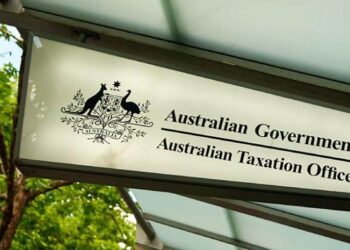In a recent strategic update, Colonial First State technical analyst Sina Heng said that recent changes to super rules, including the ability to make super contributions up to age 67 without meeting the work test, have made it easier for more people to implement the recontribution strategy.
The goal of a cash out and recontribution strategy is to increase the tax-free portion of a client’s superannuation interest. The strategy involves cashing out superannuation benefits, which consist partly or fully of taxable component, and recontributing these amounts as non-concessional contributions.
To implement a cash out and recontribution strategy, Ms Heng said the client must have unrestricted non-preserved benefits to withdraw as a lump sum.
“Usually preserved and restricted non-preserved benefits become unrestricted non-preserved when a member satisfies a condition of release with nil cashing restrictions,” Ms Heng said.
The most common conditions of release for this strategy are those in retirement after preservation age, ceasing gainful employment after reaching age 60, attaining age 65, permanent incapacity and a terminal medical condition.
Assuming the goal is to convert the highest amount of superannuation benefits as possible to a tax-free component, an important step in determining the withdrawal amount is to determine the maximum amount that can be recontributed as a non-concessional contribution, according to Ms Heng.
For 2021-22, the non-concessional contributions cap is $110,000 for individuals (who are not already in year two or three of an existing bring-forward period) with a total superannuation balance just prior to the start of the financial year of less than $1.7 million.
“If clients have amounts exceeding $110,000 in superannuation, they may wish to utilise the bring-forward rule,” Ms Heng noted.
“Assuming the client has a total super balance of less than $1.48 million, they are able to contribute up to $330,000 in 2021-22.
“However, if they want to recontribute more than this amount, they may wish to consider making non-concessional contributions over a number of financial years. For example, a contribution of $110,000 in the first financial year and then $330,000 in the following financial year.
“If the member is not working beyond age 67 and they wish to maximise their non-concessional contributions, the optimal strategy generally involves triggering the bring-forward period in the year they reach age 67.”
Another consideration is whether to contribute to a spouse’s superannuation account as either a spouse contribution or a non-concessional contribution. Ms Heng pointed out this may increase the amount that can be recontributed by taking advantage of both spouses’ contributions caps, or assist in strategies that manage total super balances or transfer balance caps.
Therefore, consideration needs to be made whether the client is eligible to receive the government co-contribution or if making a spouse contribution, the spouse contribution tax offset.
Before considering the recontribution strategy, it is also important to check the client’s ability to access the recontributed amounts, said Ms Heng.
If the member satisfies the retirement condition of release, care needs to be taken if they need to access the funds after implementing the recontribution strategy, such as to commence an income stream prior to age 65.
“Funds that are recontributed are preserved until a further condition of release is met. In some cases, meeting a further retirement condition of release may be difficult, such as if they have recommenced employment,” Ms Heng continued.
“An alternative is to commence a transition to retirement pension; however, as it is not a retirement phase income stream, the earnings on assets are taxed at 15 per cent.”
The ATO has also indicated a cash out and recontribution by way of a journal entry is not sufficient. The member’s super benefit must be withdrawn and transferred from the SMSF’s bank account to the member’s personal bank account, and the corresponding amount must be transferred back to the SMSF’s bank account as a non-concessional contribution.
Determining the new tax components
When making a lump sum withdrawal, the “proportioning rule” in the ITA states that components must be withdrawn in the same proportion as the tax-free and taxable components of the member’s interest in the super fund.
Ms Heng said for accumulation accounts, the tax-free and taxable proportions are determined by the value of tax-free and taxable components just before a lump sum is paid.
For income stream accounts, the tax-free and taxable proportions are determined when the income stream commences. These tax-free and taxable proportions then apply to all future benefits paid from that income stream, including pension payments and lump sums (i.e. commutations/rollovers).
“Individuals with multiple superannuation accounts, consider withdrawing from the account with the highest taxable component first as this will maximise the tax-effectiveness of the recontribution strategy,” she explained.
“When recontributing the withdrawn amount back into superannuation, the non-concessional contribution forms part of the tax-free component. This amount is added to any existing tax-free amount remaining after the withdrawal to determine the new tax-free component.”


